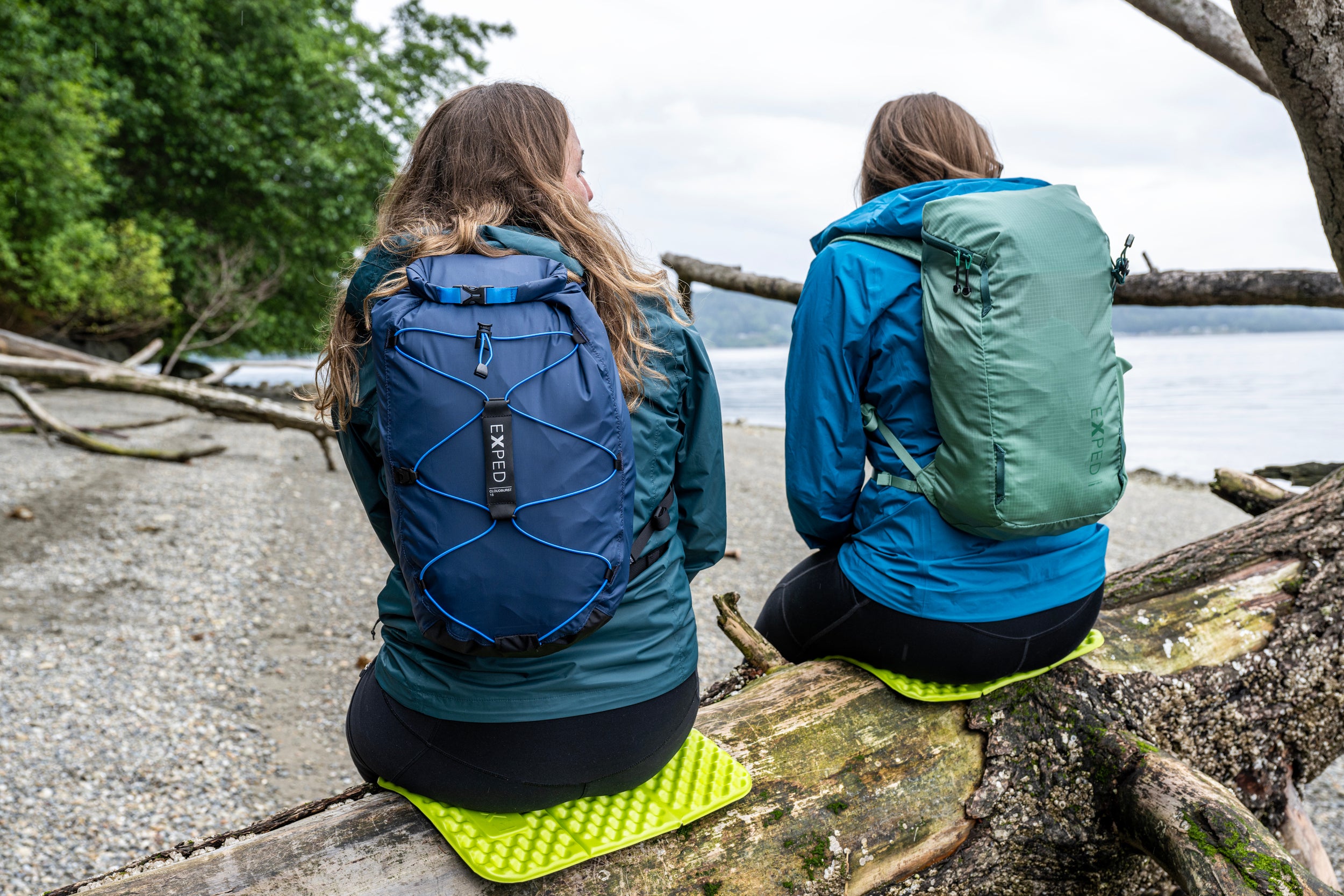
Backpacks & Drybags
-
How do I repair a puncture in my drybag?
Durable waterproof repairs of holes or tears can be made easily with the EXPED Mat Field Repair Kit or with glue that can be purchased at your local outdoor gear shop. We recommend Seam Grip + WP Waterproof Sealant and Adhesive or Aquaseal UV Repair Adhesive for most punctures. Small punctures can be located easily by holding the drybag up against a light source (sunlight or headlamp). Mark the puncture and apply the glue according to manufacturer’s instructions.
-
How can I clean backpacks and drybags?
Backpacks and drybags should never be washed in washing machines or dried in a dryer, as this can lead to permanent damage of the fabrics and the polyurethane (PU) coating. Detergent residue and fabric softeners can also damage the coating. We recommend washing your backpacks and drybags by hand in warm water using a mild soap. Stains can be removed with a soft brush. Air dry thoroughly (no direct sunlight or heat source) and store in a dry place.
-
How should I store my backpack or drybag?
Before storing your backpack or drybag make sure it is completely dry. Drying backpacks or drybags can take a few days. Storing a wet backpack or drybag can lead to mildew, mold, and permanent damage of the coatings. Store your backpack or drybag in a cool, dry place with low humidity.
-
What's the difference between women's and men's backpack models?
The shoulder straps and hip belts of the women's versions are shorter than of the men's version and the suspension system is narrower and shorter. Details are found under the specific model.
Women's models can be used by men and vice versa.
-
What is the difference between the terms submersible, waterproof, weatherproof, water repellent and water resistant?
Because there are different levels of resistance to water’s movement through a fabric, zipper or other barrier (pack closure, tent floor, tent fly, stuff sack, etc.), the outdoor industry has long used these terms to help with expectations. Be aware that within each of these categories, there are varying degrees of performance.
Here is a breakdown of how EXPED uses these terms and what to expect from each:
- Submersible is the term used to describe the highest level of waterproofness a fabric and/or item of gear can offer. These items can withstand a period of time under water. Because water pressure dramatically increases the likelihood of leakage, of both fabrics and closures, products described as submersible are equipped with relatively costly and specialized features.
- Waterproof conveys, in EXPED terms, a level protection from water for outdoor uses short of submersion. Backpacks with roll-top closures, factory-taped seams and inner laminations of waterproof films for the fabric are good examples. Products we call waterproof, when closed tightly, will perform very well in downpours of rain for long periods.
- Weatherproof describes an item of gear that will resist water’s intrusion for short periods of time. These products may use waterproof fabrics (see above) but some or all of the closures and seams are not built to withstand continuous downpours or windblown water.
- Water resistant and water repellent are terms similar to weatherproof. Water penetration is slowed, but not stopped. We use these terms mostly when describing components of an item of gear – zippers and fabrics. Zippers described as water resistant typically have a rubbery material covering the teeth, which slows water’s entry. The outer surfaces of fabrics are frequently treated with a durable water repellent (DWR), which encourages water to form beads on the fabric surface and roll off. This is the first line of defense against water but is subject to being worn off with use and must be re-applied occasionally.
